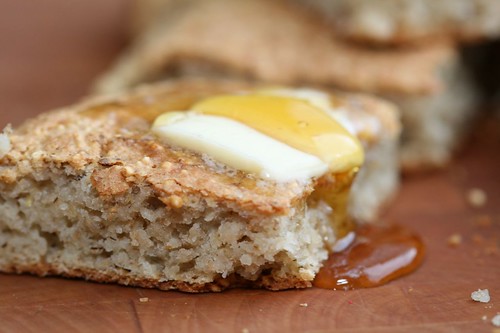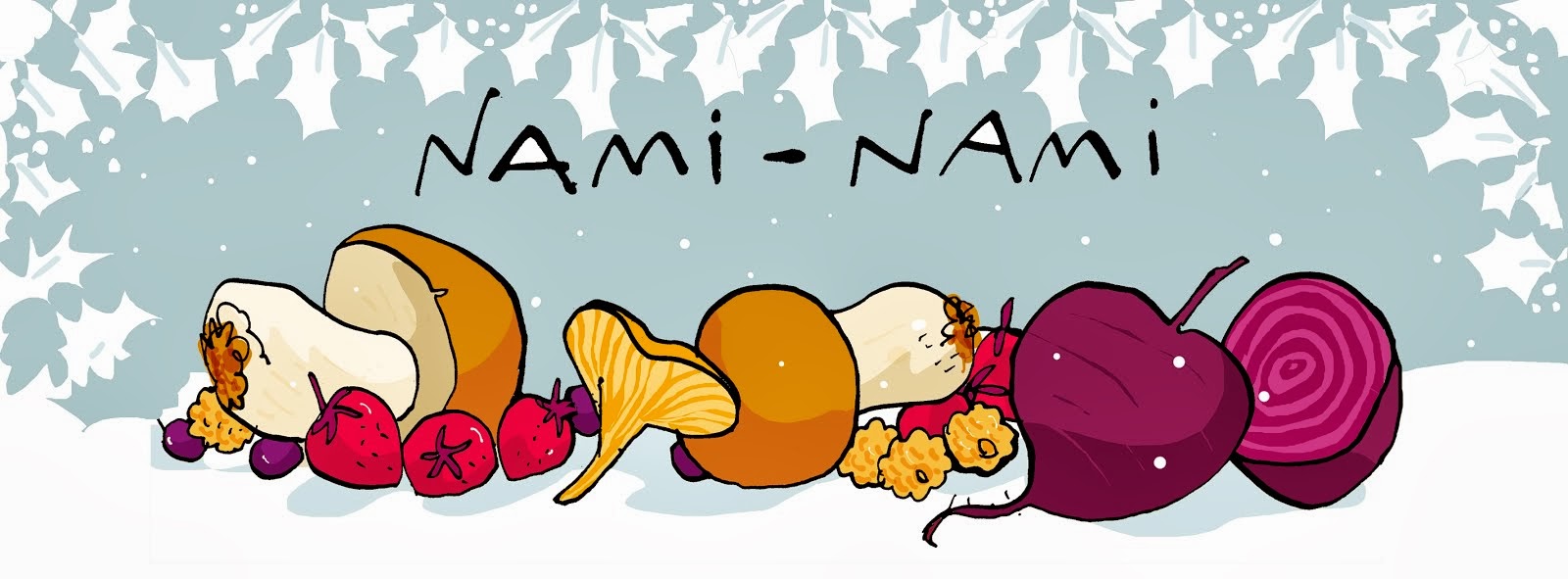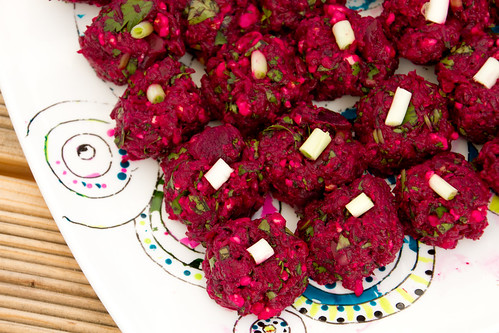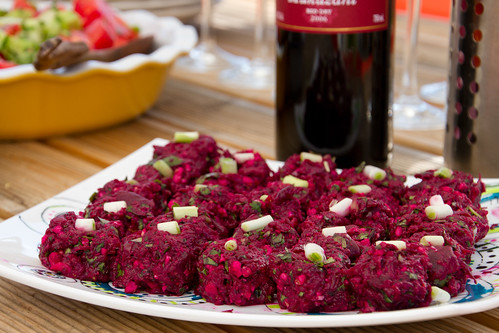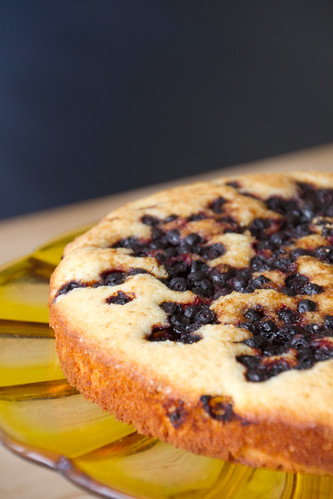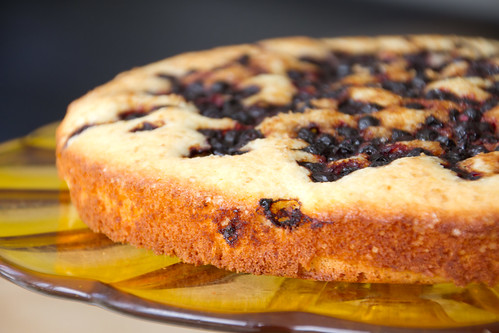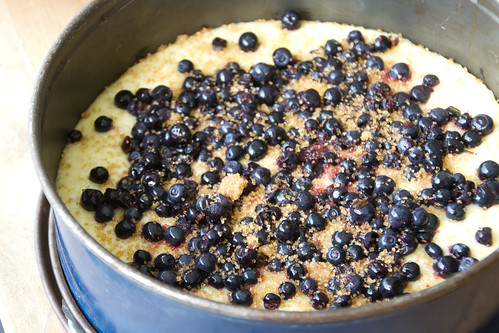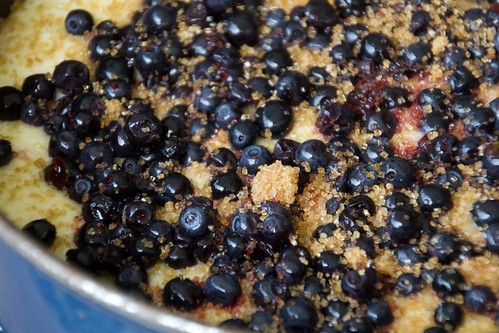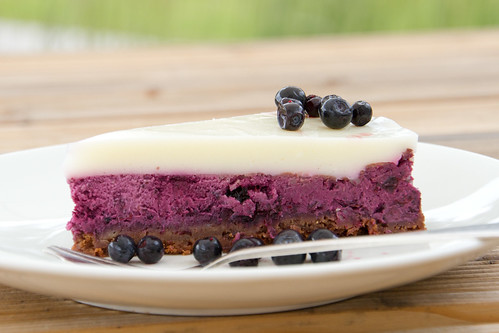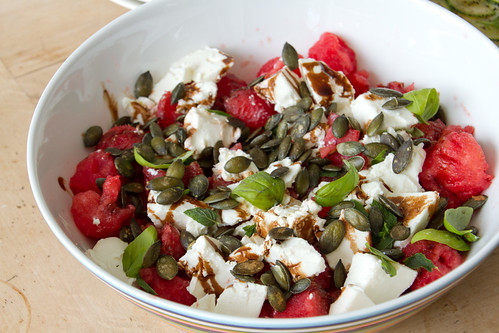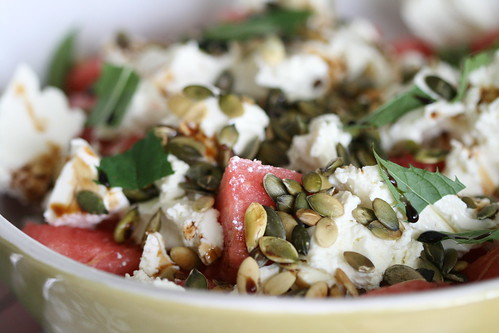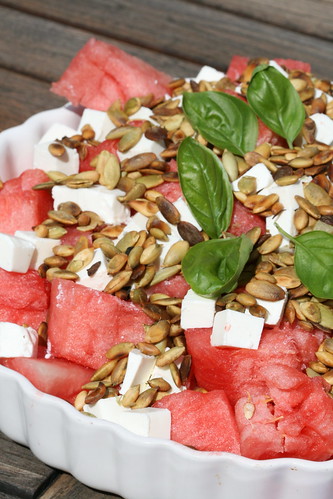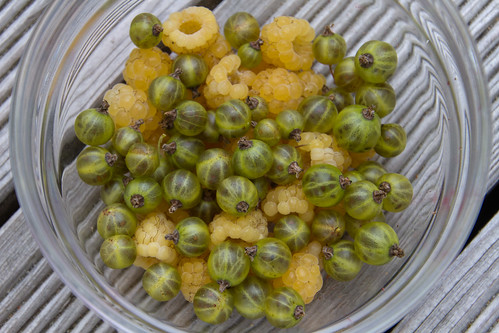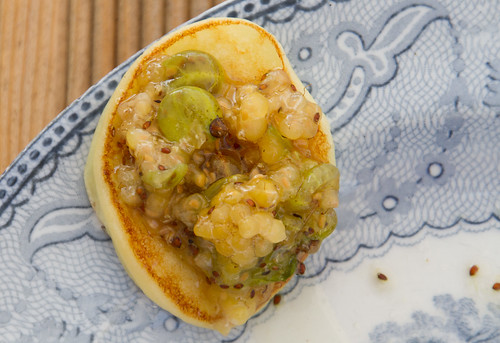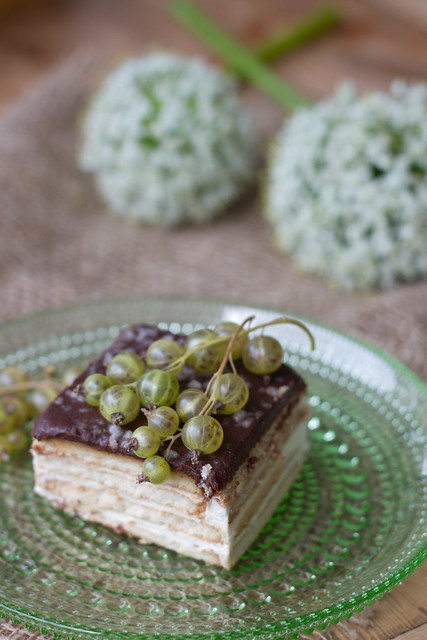
Here's a true Estonian classic -
a layered cookie cake. If you've been reading Nami-Nami blog, you may remember that an Estonian cookie cake was also featured at the festive spread we served for
Average Betty few weeks ago. It's a popular cake on children's birthday parties and on September 1st (the day all Estonian kids go back to school).
I suspect these are the main reasons for its popularity:
* There are just a few ingredients.
* It's pretty cheap and affordable.
* It's yummy :)
* There are endless variations - you can use different flavoured cookies, different cream, different decorations.
* The cake takes about 10-15 minutes to assemble, and every kid can make it, even small ones.
The cookie cake above was made with the help of my 3,5 year old daughter - she did all the cookie-dipping and cookie-placing, I was left with spreading the sour cream between the layers. And she's made this cake before - here's a family portrait taken in January - few days before our son's first birthday and few weeks before our daughter's third birthday:

Photo by Hele-Mai Alamaa (Pere & Kodu) as part for the
cover story back in February.
I make two main versions - one with halva and sour cream filling, the other with plain sour cream filling. That's right - plain, unflavoured sour cream - the cookies are sweet enough and there's absolutely no need to sweeten the cream that goes between the cookies. However, there are lots of people who add thinly sliced bananas between the layer, but I haven't tried that myself. I guess I like the classics remain classic :)
As far as the cookies go, you need rectangular unfilled cookies - either plain or chocolate-flavoured or any other flavour you like. The cookies shouldn't be more than 5-6 mm (1/4-inch) thick. In Estonia any flavour produced and distributed by Estonian Kalev or Latvian Selga would work, elsewhere you could try with
Bahlsen Leibniz's Butter Biscuits, or
LU's Le Petit Beurre biscuit cookies, for instance.
Sounds familiar? There's a similar, yet different popular cake in Germany, called
Keller Kuchen (Cellar cake) or
Kalter Hund (Cold Dog), or
radiokaka in Sweden, where butter cookies are layered with chocolate and coconut butter cream.
NB! Make this cake at least 4 hours earlier, preferably day before, so the sour cream has time to soften the cookies and make the cake more cakey. You can top the cake with chocolate glaze and decorate it just half an hour before serving.
Estonian cookie cake
(
Kõige parem küpsisetort)
Serves 12 to 15
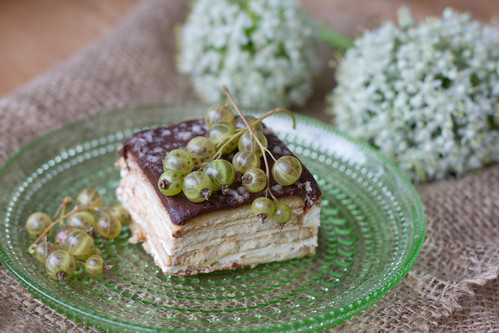
4 packets of square/rectangular cookies (180 g/6 oz each)
100-200 ml milk or coffee for dipping the cookies
750 g thick sour cream (about 20% fat content)
Chocolate glaze:
100 g dark chocolate
50 g unsalted butter
4 Tbsp double cream
To decorate:
crispy pearl sugar
fresh berries
coconut flakes/shredded coconut
Dip 12 to 15 cookies into the milk or coffee and place onto a suitable cake tray (I usually use 3x5 cookies or 15 in total, depending on your cake tray, you may prefer 3x4 pattern, resulting in 12 servings).
Now spread about a third of the sour cream evenly on top of the cookies. Continue with 3 more cookie and 2 more sour cream layers, finishing with the cookie layer.
Cover the cake with a cling film and place into the fridge to soften.
To make the
chocolate glaze, break the chocolate into pieces and place into a small saucepan with butter and fresh cream. Slowly heat on a medium heat, stirring regularly, until the glaze is smooth and glossy. Spoon over the cake, spreading it evenly all over the top. (If using shredded coconut or pearl sugar for garnish, do it now, so it sticks into the chocolate glaze). Place back into the fridge to harden.
To serve, cut the cake into neat squares (or rectangles, if your cookies weren't square), or smaller slices, if you prefer. Garnish with berries, if you wish (I used the wonderful green variety of blackcurrants,
Vertti, that I was talking about
in a recent post).
Here's exactly the same cake, using chocolate-flavoured cookies and garnished with crispy pearl sugar granules:
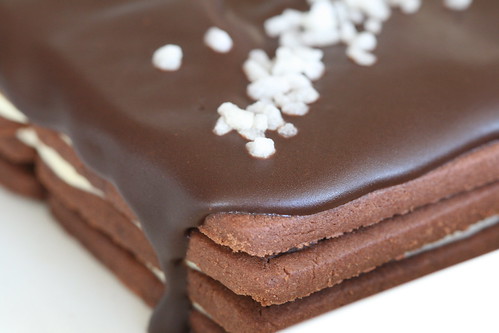 Similar recipes in English-language foodblogs:
Easy 7-layer cake
Similar recipes in English-language foodblogs:
Easy 7-layer cake @ Steven and Chris
Kellerkuchen / Cellar cake @ Light Recipes
Similar recipes in Estonian foodblogs:
Küpsisetort kohupiimakreemi ja banaaniga @ Sööme silmadega (Dagris)
Šokolaadine küpsisetort @ Kiilike köögis (Anneli)
Kohupiimakreemiga küpsisetort @ Siit nurgast ja sealt nurgast (Mari-Liis)
Vale-napoleoni kook @ Kokkama Ragnega (Ragne)
Šokolaadi-toorjuustukook küpsistega @ Kokkama Ragnega (Ragne)
Hapukoorekreemiga küpsisetort @ Tassike.ee (Marju)
Küpsisetort @ Magusad fotod (Marit)
Kohvimaitseline küpsisetort @ Hea toit, parem elu! (Merit)
Küpsisetort @ Head asjad (Neve)
Halvaa-küpsisetort @ Maitse asi (Jaanika)
